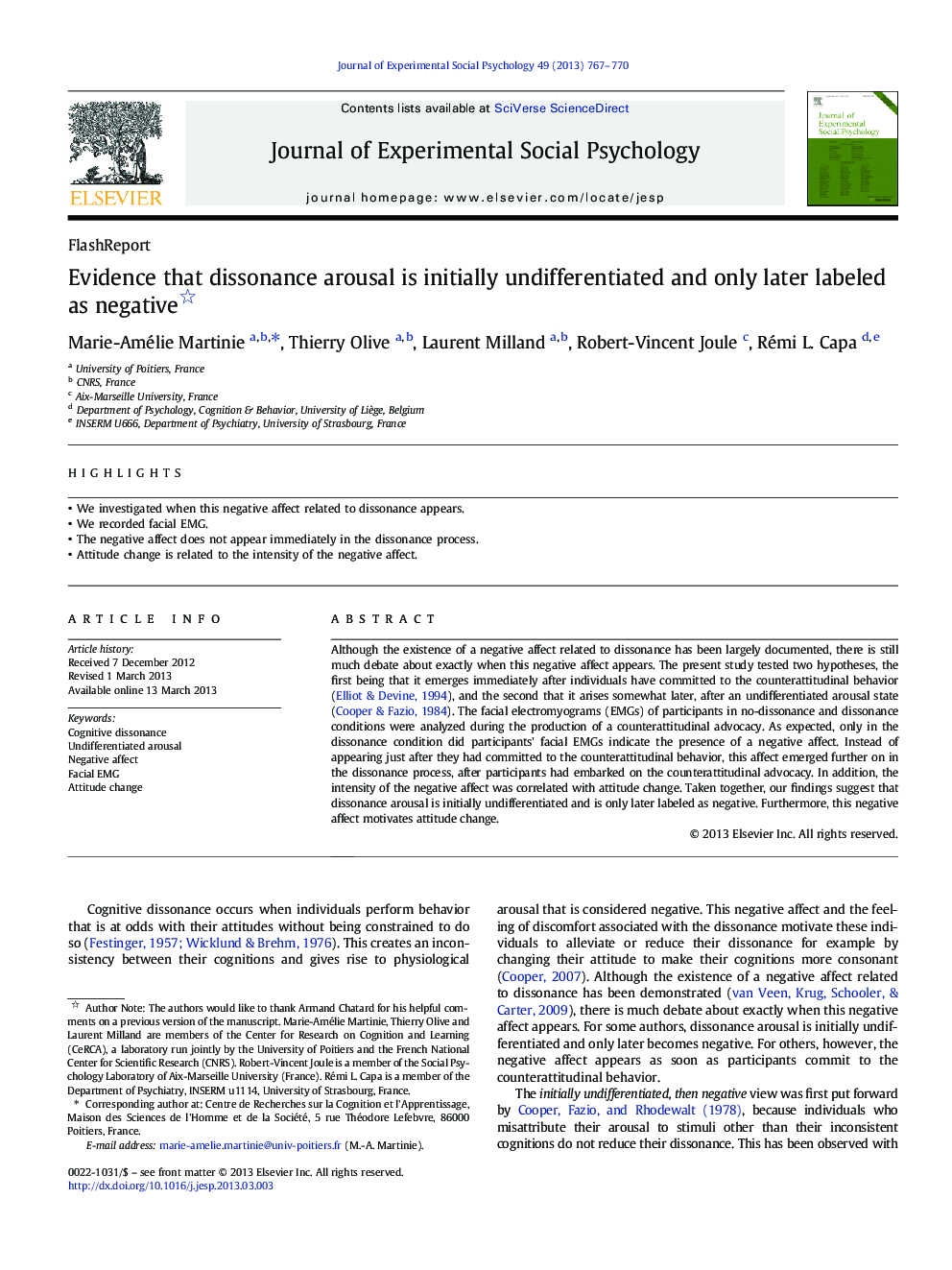| Article ID | Journal | Published Year | Pages | File Type |
|---|---|---|---|---|
| 947932 | Journal of Experimental Social Psychology | 2013 | 4 Pages |
•We investigated when this negative affect related to dissonance appears.•We recorded facial EMG.•The negative affect does not appear immediately in the dissonance process.•Attitude change is related to the intensity of the negative affect.
Although the existence of a negative affect related to dissonance has been largely documented, there is still much debate about exactly when this negative affect appears. The present study tested two hypotheses, the first being that it emerges immediately after individuals have committed to the counterattitudinal behavior (Elliot & Devine, 1994), and the second that it arises somewhat later, after an undifferentiated arousal state (Cooper & Fazio, 1984). The facial electromyograms (EMGs) of participants in no-dissonance and dissonance conditions were analyzed during the production of a counterattitudinal advocacy. As expected, only in the dissonance condition did participants' facial EMGs indicate the presence of a negative affect. Instead of appearing just after they had committed to the counterattitudinal behavior, this affect emerged further on in the dissonance process, after participants had embarked on the counterattitudinal advocacy. In addition, the intensity of the negative affect was correlated with attitude change. Taken together, our findings suggest that dissonance arousal is initially undifferentiated and is only later labeled as negative. Furthermore, this negative affect motivates attitude change.
